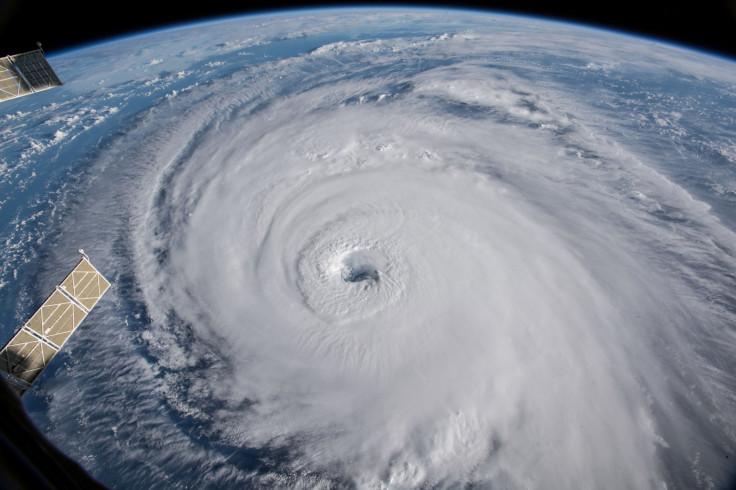Hurricane Florence Path: Drifts Toward Myrtle Beach, Weakens To Category 2 Storm

Hurricane Florence downgraded to a Category 2 storm with 110 mph maximum winds Wednesday as it churned toward Myrtle Beach, South Carolina. The storm was also predicted to move inland across the Columbia metro area.
The tropical storm watch “is in effect for Chesterfield, Lee, Sumter and Clarendon counties,” predicting “sustained winds of 35 to 45 mph, with gusts up to 60 mph, are possible in the next 48 hours,” National Weather Service office in Columbia issued a storm watch for the first time.
The National Hurricane Center (NHC) said Wednesday evening the storm has weakened below major hurricane intensity; however, the wind field of the hurricane continues to grow in size and the threat of rainfall has also not diminished. Florence was expected to bring life-threatening storm surge and rainfall to the Carolinas as it approached the coast Thursday and Friday.
Sand bags surround homes on North Topsail Beach, North Carolina, on Wednesday as Hurricane Florence threatens the coast. https://t.co/PqOkcznsli pic.twitter.com/smPN3i0r86
— Fox News (@FoxNews) September 13, 2018
As of 8 p.m. EDT, the storm was approximately 335 miles southeast of Wilmington, North Carolina, and roughly 370 miles east-southeast of Myrtle Beach, NHC Said.
Georgia's governor declared a state of emergency Wednesday afternoon as the track shifted somewhat south and west, throwing the state into peril.
"In light of the storm's forecasted southward track after making landfall, I encourage Georgians to be prepared for the inland effects of the storm as well as the ensuing storm surge in coastal areas," Gov. Nathan Deal tweeted.
North Carolina Gov. Roy Cooper spoke at a news conference with emergency management officials Wednesday evening and said at least 50 shelters were open across the state and up to 1 million residents have been asked to evacuate, ABC 11 reported.
He issued an evacuation order for the state's barrier islands and said between 750,000 to 1 million residents were asked to leave their homes. He also warned the coast will "feel the wrath" of the storm, with all parts of the state seeing some impact.
Lawrence Joel Veterans Memorial Coliseum preparing for 1000 evacuees from Hurricane Florence. @WFMY #StormTrack2 pic.twitter.com/C3HHdMTxwX
— Janson Silvers (@JansonSilvers) September 13, 2018
Ports of Wilmington and Morehead City in North Carolina were closed to commercial truck traffic Wednesday and will remain closed to traffic of any kind Thursday, North Carolina officials said, CBC News reported.
North Carolina officials started evacuating hundreds of inmates from state prisons and local jails.
“All offenders affected by the move will be allowed to make a free phone call to a family member over the weekend,” Department of Public Safety spokesman Jerry Higgins said.
South Carolina officials on the other hand said they have no plans to move the 650 inmates from a medium-security prison. In the past, “it’s been safer to stay in place with the inmates rather than to move to another location,” Department of Corrections spokesman Dexter Lee said, adding inmates at MacDougall prison did not evacuate during Hurricane Hugo and the prison “didn’t have any structural damages,” Fox News reported.
South Carolina State Ports Authority spokeswoman confirmed the Port of Charleston will also be closed to container traffic Thursday and may re-open Sunday.
© Copyright IBTimes 2024. All rights reserved.





















